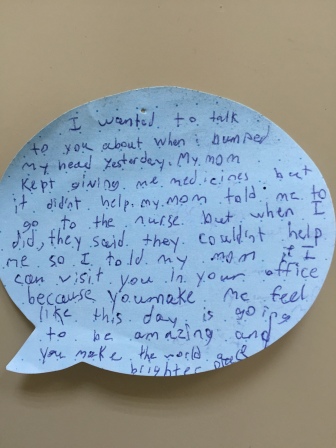Change cannot be forced.
I am a firm believer that change can only happen for an individual when they want to change. As a counselor, I often work with students on developing pro-social and positive behaviors (re: changing behaviors from undesirable behaviors to more desirable behaviors). With teachers, I consult and provide feedback around areas of concern with specific students or groups of students (re: changing current practices to better align with student needs). With parents I meet to discuss strategies to help a student academically, behaviorally, and socially both inside the school and inside the home (re: changing specific systems in place to maintain continuity for the student). A large majority of my counseling discussions center around change — changing behaviors, interactions, norms, conversations, and expectations. For change to occur the student, parent, or teacher must have motivation to change. This individual needs to see the value of change or understand what in the long term what would be different or better if change occurred. There has to be a drive to want to change — motivation. In other words, I cannot — no matter how hard I try — force another individual to change.
Change can be challenging especially if a certain behavior or pattern is working for you. Change takes time, energy, and investment. It also takes a future vision of what life would be like after things change. Without this vision, the need for change might be unclear. Therefore, I have come to realize that before jumping into a support plan with a student or teacher, there is value in asking a simple question. That question is:
“Are you willing to do whatever it takes to make things different for you?”
If the answer is “yes,” then we have someone who is willing to put in the work and reflection (however long that may be) to change their current behaviors, actions, responses, situation, etc. If the answer is yes, as a counselor I know that the work that will be done to create meaningful, lasting change will be mutual. I will not be working harder for change than the student or teacher and the outcome for the individual is usually much more positive and sustainable.
If after asking the question, the student or teacher responds with a “no” or “I’m not sure” then this is a good indicator that the individual is not fully motivated to change. The current behaviors, situations, or interactions are working and changing might be too big, scary, or overwhelming. Perhaps the vision of the future (post-change) is cloudy or unclear. The individual might not fully understand the benefit of changing, at this point.
If the response is “no” I do not lose hope. Rather, I typically thank the person for her/his honesty. Then, I remind the individual that the only person who can change is the person him/herself. So, at this time, what the “no” response tells me is that I am going to be doing work for the student or teacher instead of with the teacher. I typically let the teacher or student know that they should go and reflect for a few days on:
- What the individual would like to see differently?
- If change occurs, how would life be different (better, improve)?
- What the individual is willing to do to for things to be different?
Over time, most people realize that work has to be done for change to occur — hard work and self-reflection. I have found that sometimes hours, sometimes days, or sometimes months have to pass. However, more often than not a situation occurs that causes the motivation for a student or teacher to change and make something better for her/himself. Then, when I ask the question, “Are you willing to do whatever it takes to make things different for you?” the answer has become a solid yes. Let the counseling support begin!





